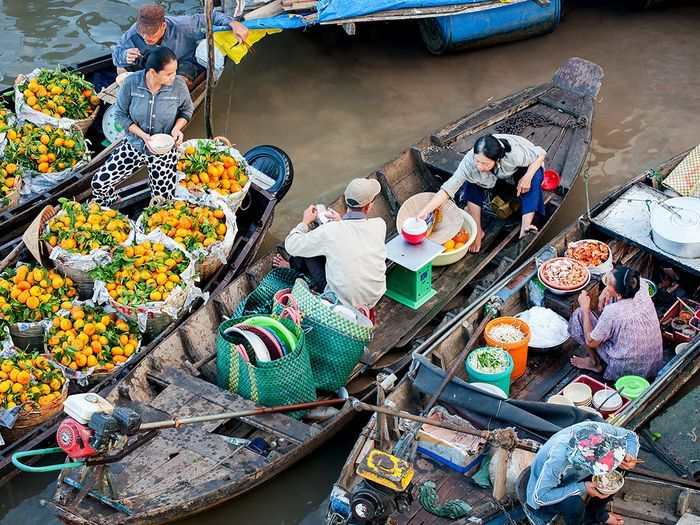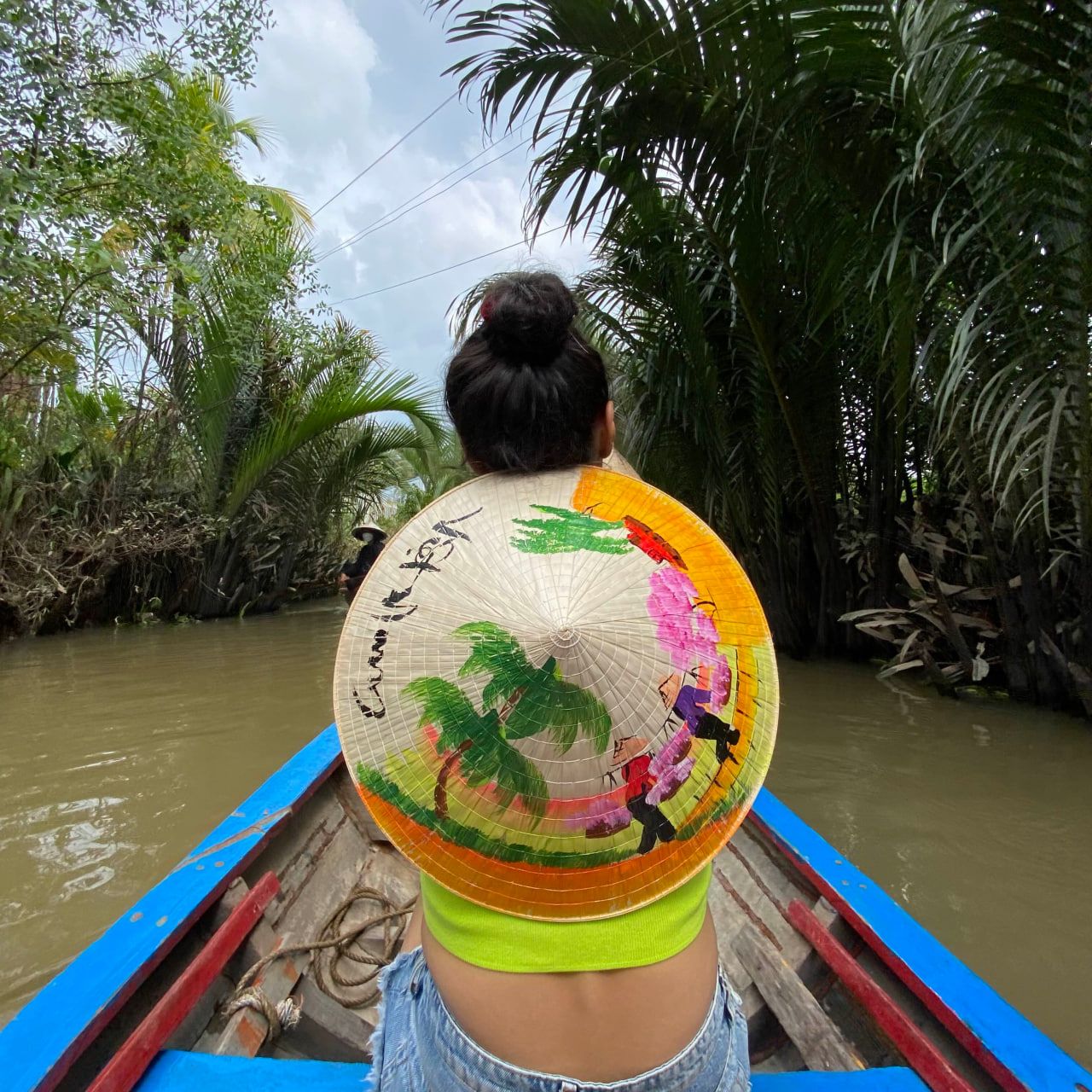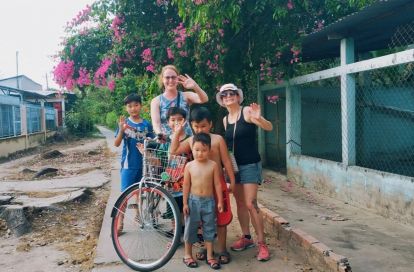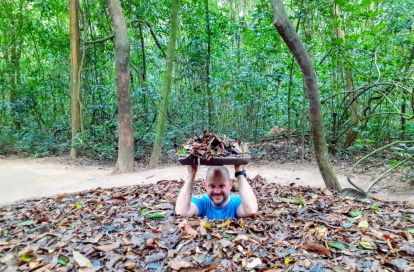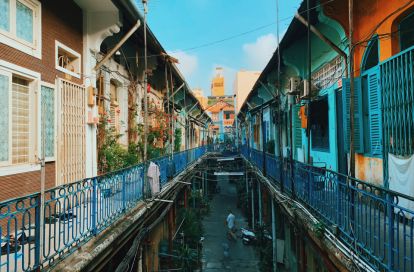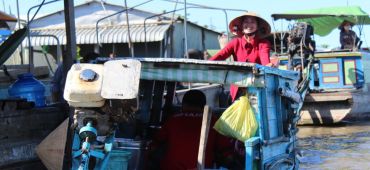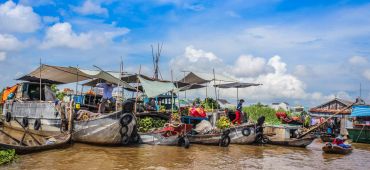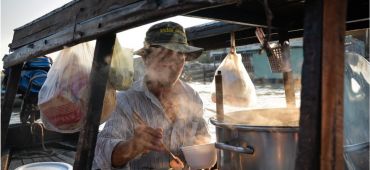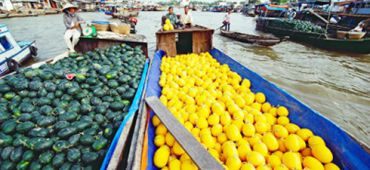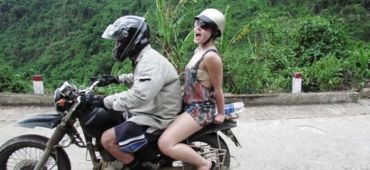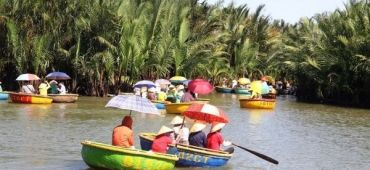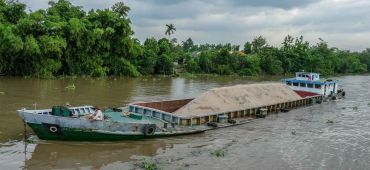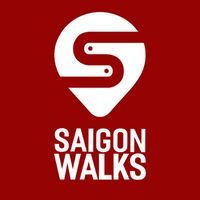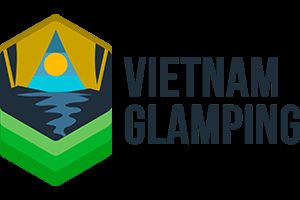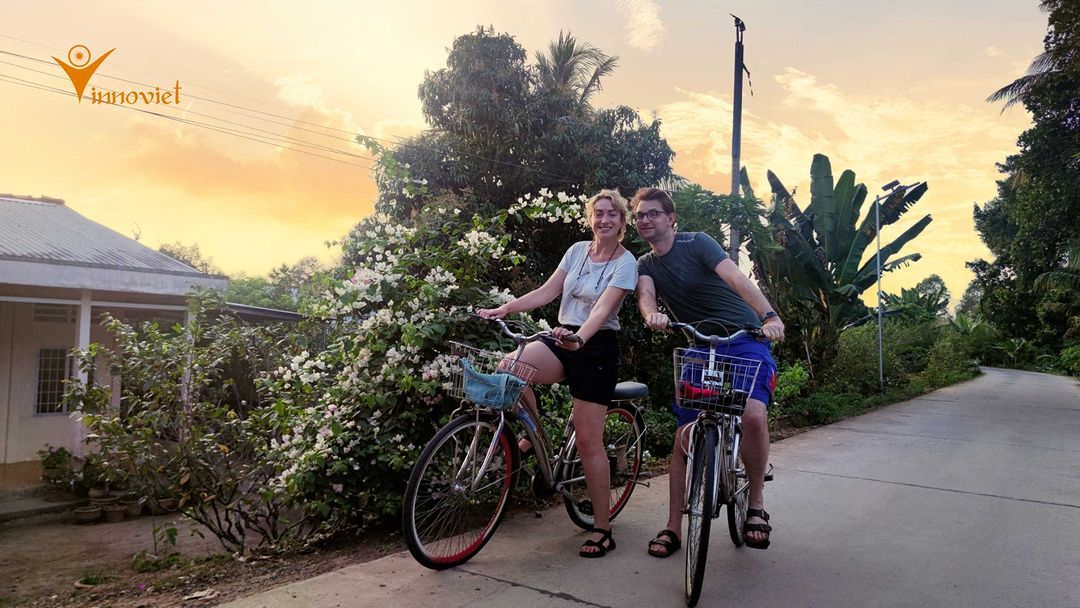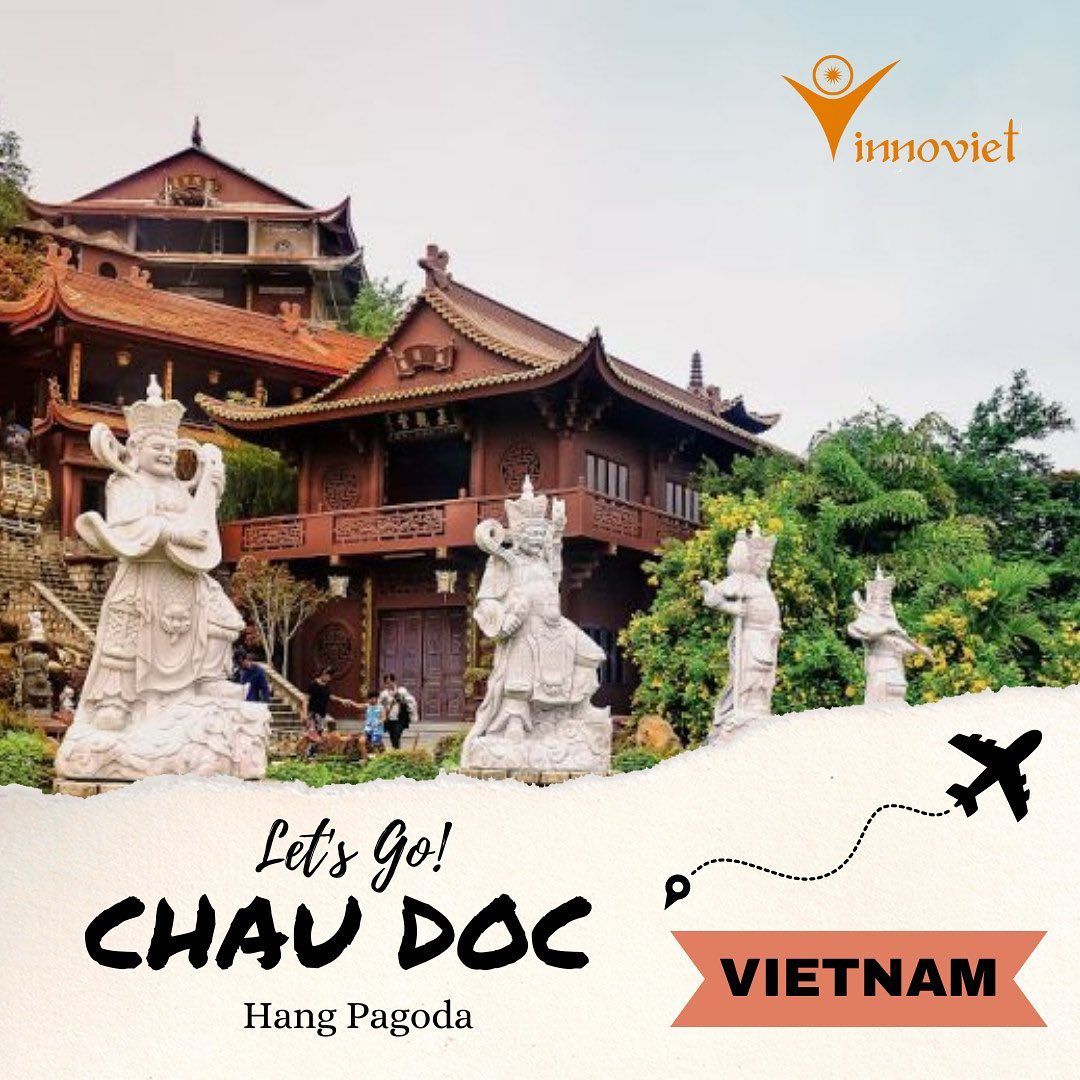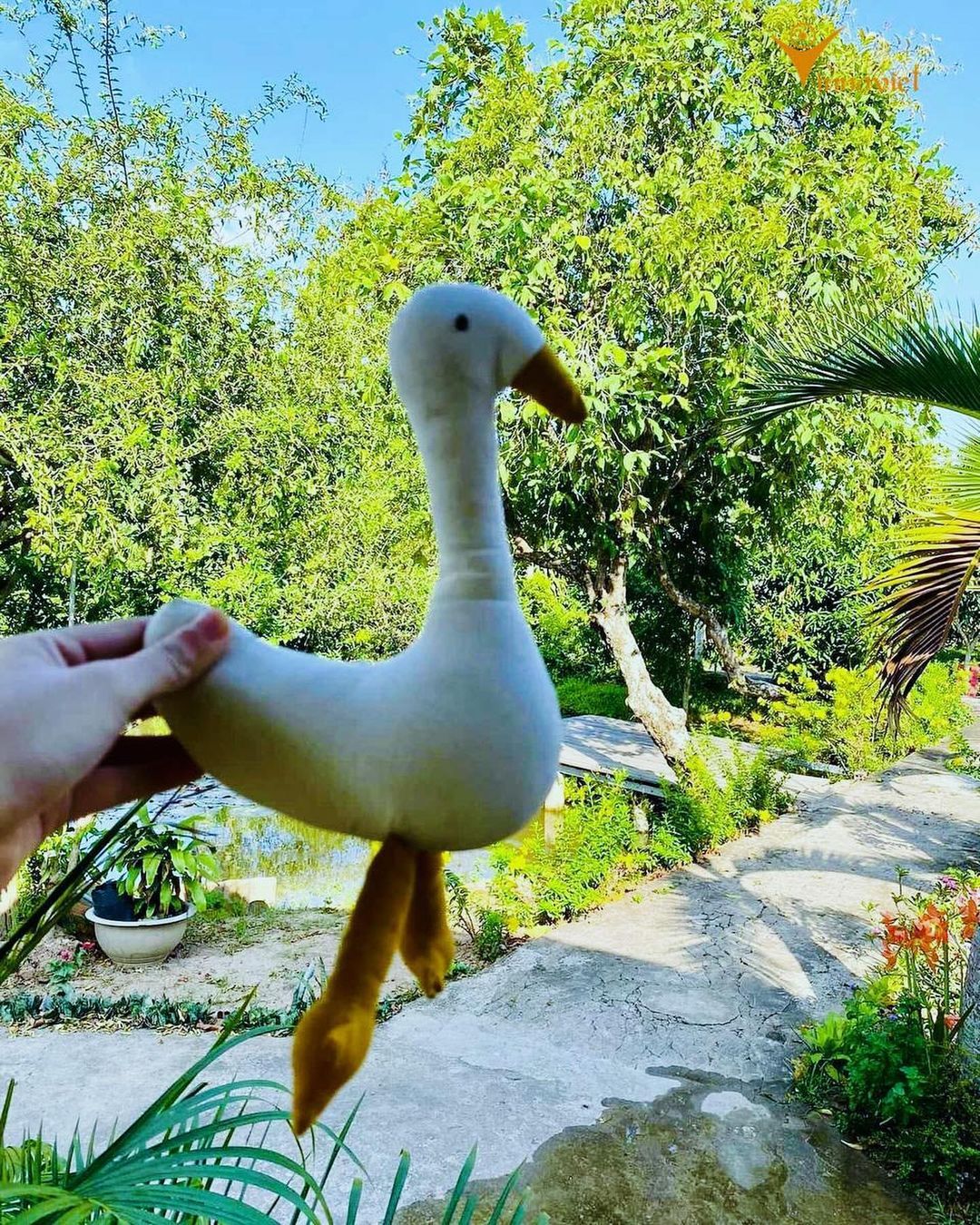Immersing yourself in the vibrant tapestry of Mekong Delta's floating markets is an absolute must when you visit Vietnam. Among these, the Cai Rang floating market stands out as the largest and most mesmerizing.
The intricate web of the Mekong River and its meandering tributaries has given birth to a unique waterborne transportation system, influencing the distinctive way of life of the local communities. When you venture into this region, you'll witness the captivating spectacle of locals engaging in trade directly from their boats, effectively crafting an expansive floating market. Situated near the charming city of Can Tho, the Cai Rang Floating Market reigns supreme as the most renowned among these aquatic marketplaces.
About the Cai Rang floating market - Can Tho
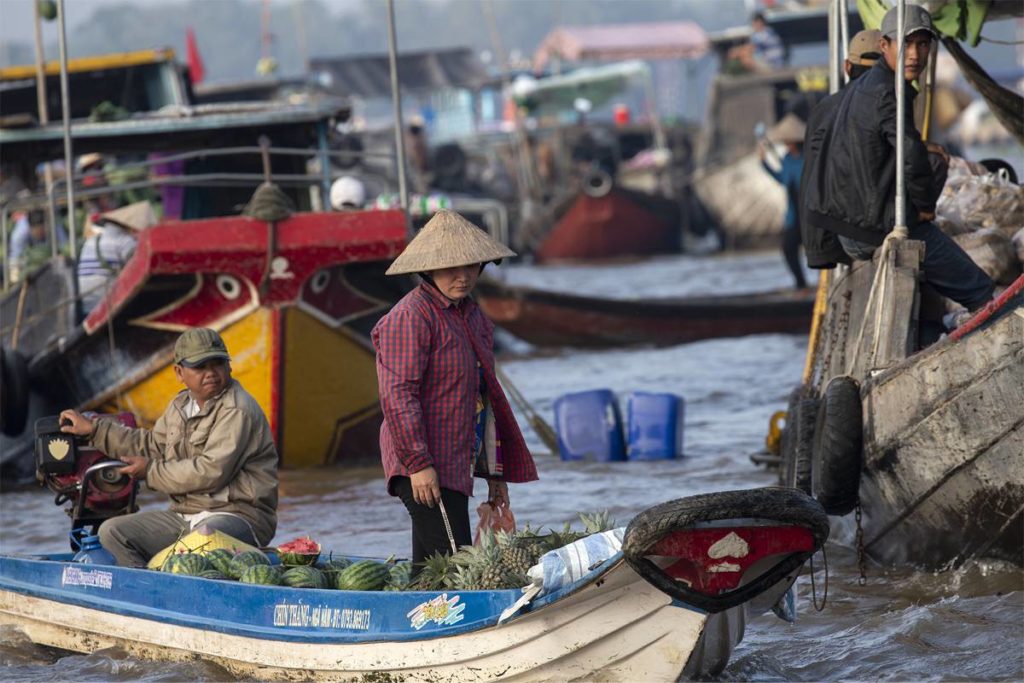
The Cai Rang Floating Market is the largest floating market in the Mekong Delta and is located about six kilometers from Can Tho. You can reach the floating market by boat from Ninh Kieu Wharf in Can Tho town and it is about half an hour by boat.
Cai Rang, much like the numerous floating markets scattered across the picturesque Mekong Delta, has a rich history steeped in trade and commerce. Its location along the riverbanks is no coincidence, as the Mekong Delta is intricately interwoven with a labyrinth of waterways, making river transport the lifeblood of this region. Here, owners of fruit orchards, local factories, and rice farmers have long practiced the tradition of loading their freshly harvested goods directly onto boats, setting sail towards bustling markets like Cai Rang.
These floating markets have been integral to the livelihoods of the local communities, serving as dynamic centers for trade. Traders would converge at these markets, skillfully exchanging goods and loading their purchases onto their boats, ready to navigate the intricate water channels. From there, these commodities would embark on journeys to various destinations, from local shops to even the bustling metropolis of Ho Chi Minh City.
Over the span of a century, these floating markets have not merely survived; they have thrived. Modernization and improvements in infrastructure have introduced alternative modes of transportation, primarily by road. Yet, Cai Rang remains a vibrant and bustling marketplace, where a colorful array of boats congregates daily. Locally-sourced fruits, vegetables, and an assortment of other regional products continue to change hands here.
The enduring charm of Cai Rang is not lost on travelers. This captivating spectacle of boats and vibrant commerce has become a magnet for visitors from all corners of the globe. It has even garnered the attention of renowned chef Gordon Ramsay, who featured this remarkable market in one of his popular cooking shows.
What wonders await you at Cai Rang Floating Market?
The bustling trade scene
When you arrive boating you will soon find hundreds of boats moored in the river as sort of permanent market stalls. Other boats maneuver past it and occasionally moor to trade. After a successful negotiation, the goods are transferred from one boat to another. It is beautiful to see, but above all unique, because there are few places in the world where people trade in this way.
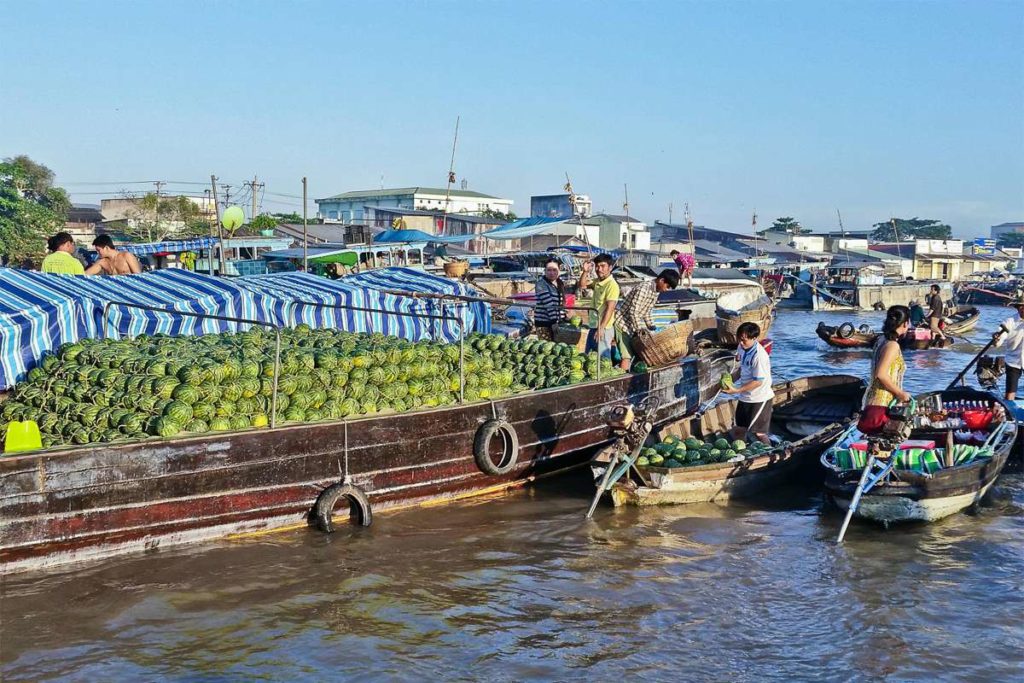
Regional products - Local Delights at Cai Rang Floating Market
At the vibrant Cai Rang floating market, you'll find a cornucopia of regional treasures sourced from nearby factories, plantations, farms, and orchards. The Mekong Delta, often hailed as Vietnam's fruit basket, contributes an abundance of fruits that adorn boats, from familiar choices like durian, coconuts, jackfruit, and dragon fruit to more exotic options like rambutan, pomelo, star apple, mangosteen, soursop, and sapodilla.
In addition to the colorful array of fruits, the market boasts a diverse selection of vegetables and an assortment of processed delicacies, including coconut sweets, dried fish, and fish sauce.
Pro Tip: Keep an eye out for boats with tall poles adorned with their top products, making it easy to identify what each boat has to offer even from a distance.
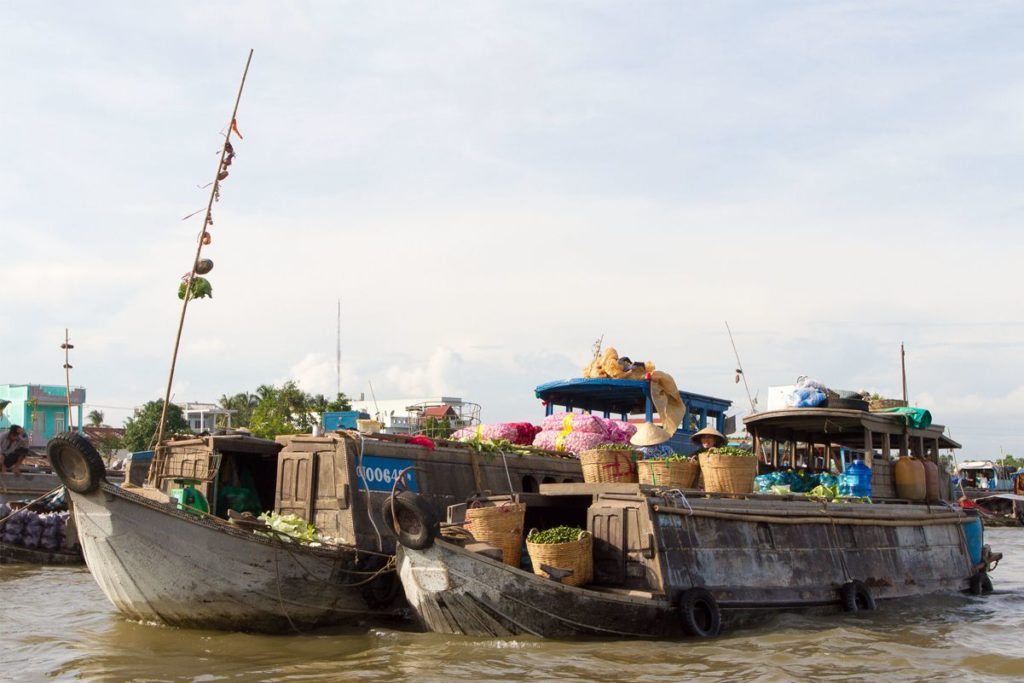
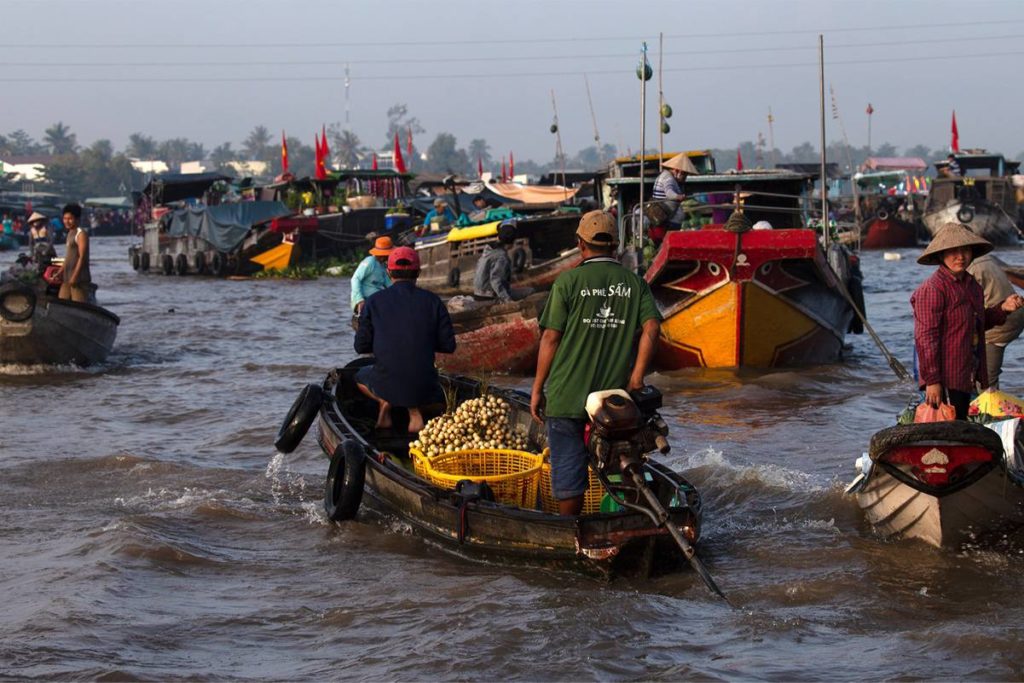
Food
The Cai Rang floating market starts very early in the morning and for that reason you will also see “floating restaurants” that serve a delicious breakfast. These floating restaurants are nothing more than small traditional sampan boats that sail from boat to boat to sell their delicious breakfast dishes.
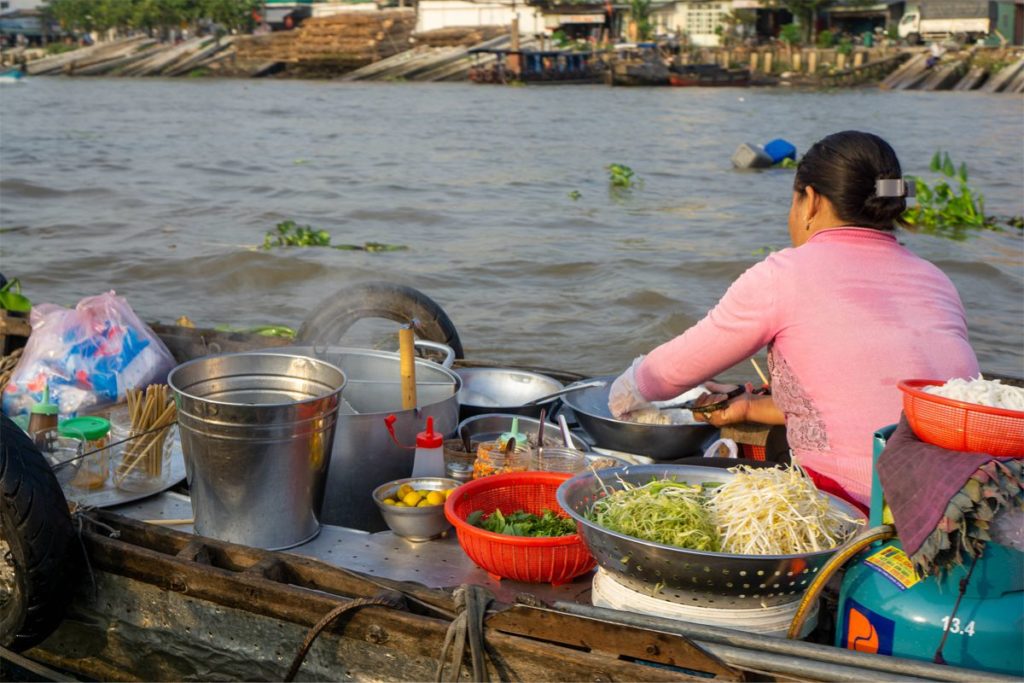
The Cai Rang floating market is renowned for its delectable offerings, with pho, com tam (broken rice), and hu tieu (pork noodles) being the crowd favorites. Remarkably, these culinary delights are incredibly affordable, often priced at no more than 25,000 VND, approximately 1 USD. Moreover, you can kickstart your day with a robust cup of local coffee.
Despite the confined quarters of their petite wooden boats, the skilled locals expertly maneuver their way through the bustling market, effortlessly handling their bubbling soup kettles. Many of them have honed their craft for decades, demonstrating their mastery of the art.
When to visit Cai Rang Floating Market?
The tropical climate of Vietnam has two main seasons: the dry season, which runs from November to April, and the rainy season, which lasts from May to October. The weather in the Mekong Delta is relatively mild, so in principle you can visit the Cai Rang floating market all year round.
When you travel during the rainy season, it is often quieter with other travelers. In the dry months it can get quite hot, but then the harvest season falls. This means that there are more varieties of native fruits and agricultural products to be found.
How do you get to Cai Rang floating market?
There are two viable options to consider when visiting Cai Rang floating market:
By yourself
The Cai Rang floating market is located near Can Tho. This means that you must travel to this city first. As one of the largest cities in Vietnam and even the largest in the Mekong Delta, this is quite easy.
From Ho Chi Minh City there are plenty of bus connections to Can Tho. From other parts of the country you can choose to travel to Ho Chi Minh City first, but Can Tho also has its own airport that you can reach with domestic flights from cities such as Hanoi and Da Nang.
Per tour
Many travelers opt for guided tours when exploring the Mekong Delta, primarily because navigating between destinations can be challenging unless you're comfortable riding a motorcycle.
If you're considering a tour to the Cai Rang floating market, plan for a minimum of a two-day excursion. Local Vietnam offers four distinct tour options for your convenience:
-
Mekong Delta homestay 2 days tour in non touristy villages with cycling
-
Small group tour cu chi tunnels - Cu Chi tunnel half day tour - Ben Duoc Tunnel
Tips for international travelers
Essential items to pack
As your visit often includes a scenic boat trip through the Mekong Delta, prepare for an extended time on the water. Pack sunscreen to shield yourself from the strengthening sun, along with extra refreshments and perhaps a snack. It's wise to carry some small cash for breakfast purchases and the chance to practice your bargaining skills while buying fresh fruit.
Optimal visiting hours
Cai Rang Floating Market stands apart from the crowd, as it welcomes visitors all day long. However, we recommend an early morning start for the best experience. The morning hours offer more bustling trade, a higher number of boats, and the opportunity to relish a delectable breakfast at a floating restaurant. Plus, the morning sun ensures a more pleasant and cooler ride on the river.
Choosing your accommodation
Since most boat trips to Cai Rang Floating Market commence early in the morning, consider arriving a day prior and staying at a nearby lodging. You need not limit yourself to Can Tho's city center; the surrounding countryside offers charming accommodations. Here, well-connected waterways provide convenient access to the market. While Can Tho offers its own appeal, lodging in the countryside offers a more authentic, local experience for adventurous travelers.
Enhance your experience with a boat tour
Maximize your early morning adventure by combining a visit to Cai Rang Floating Market with a delightful boat excursion through the Can Tho Delta. If you're staying farther from the city center, consider beginning your day with a visit to the Phong Dien Floating Market, open only from 5:00 to 6:30. Though smaller, this market exudes local charm.
Navigate the winding channels connecting Cai Rang and Phong Dien, stopping at fruit orchards, local villages, and traditional rice paper factories. This immersive journey provides a unique glimpse into local culture.
Beyond the floating markets
While Can Tho offers enchanting floating markets and boat trips, there's a multitude of activities to keep you engaged for 1 to 3 days. Explore the area with cycling adventures, embrace nature through bird watching in nearby national parks, and immerse yourself in spiritual serenity by visiting pagodas. Can Tho and its surroundings promise an unforgettable experience beyond the waterways.
Enjoy other floating markets
Cai Rang Floating Market, while the largest, is not the only one worth exploring in the Mekong Delta.
The Cai Be Floating Market also enjoys popularity, conveniently reachable on a day trip from Ho Chi Minh City.
Nearby, the charming yet less crowded Phong Dien Floating Market offers an alternative experience and can be seamlessly combined with a visit to Cai Rang, both within one morning.
For a truly authentic and off-the-beaten-path encounter, consider venturing to Long Xuyen in An Giang province. Here, you'll immerse yourself in the most genuine local atmosphere.
Meanwhile, just north of Can Tho in Vinh Long province, the Tra On floating market awaits, adding further variety to your exploration of the delta's vibrant waterborne markets.
Be sure not to miss out on our special offer when you join us for this experience.
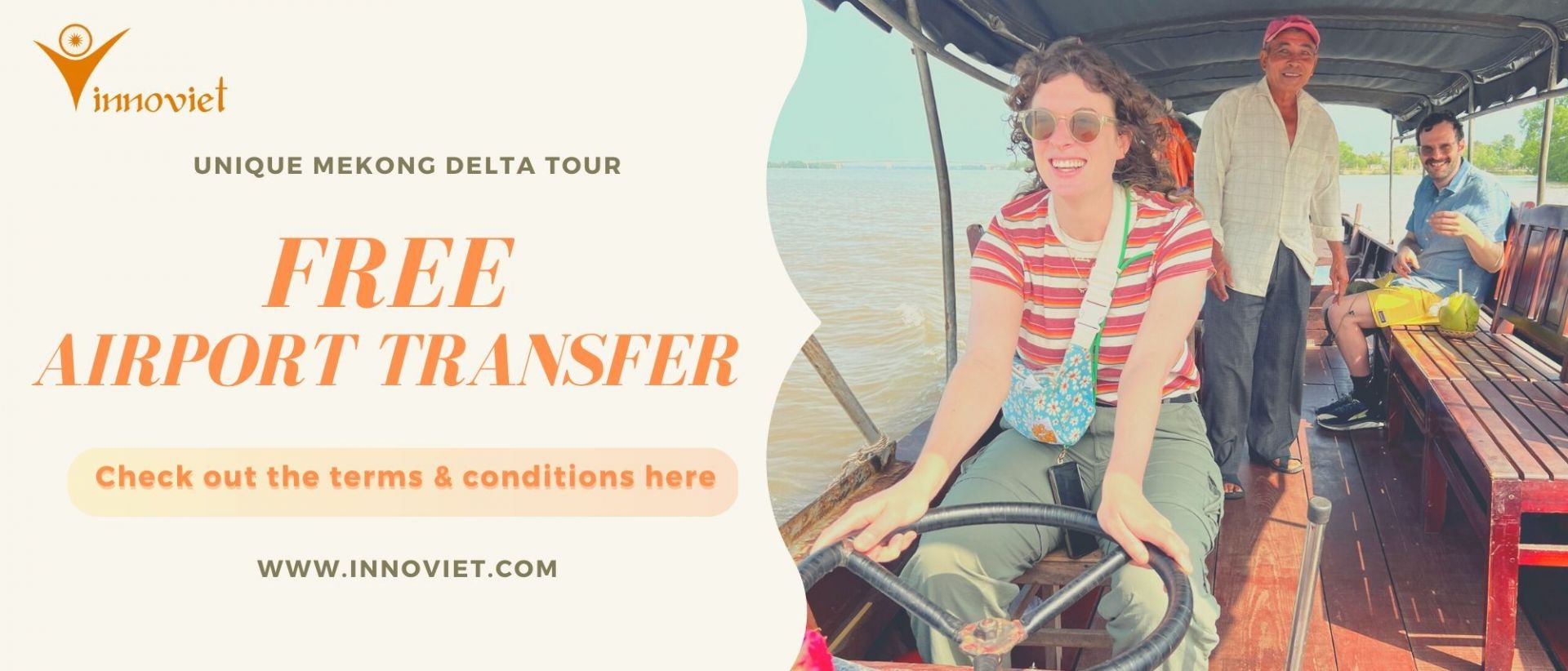
We hope that your experience will be nothing short of amazing
JOIN OUR FACEBOOK GROUP HERE to learn our tips as well as discuss them before going to these locations

